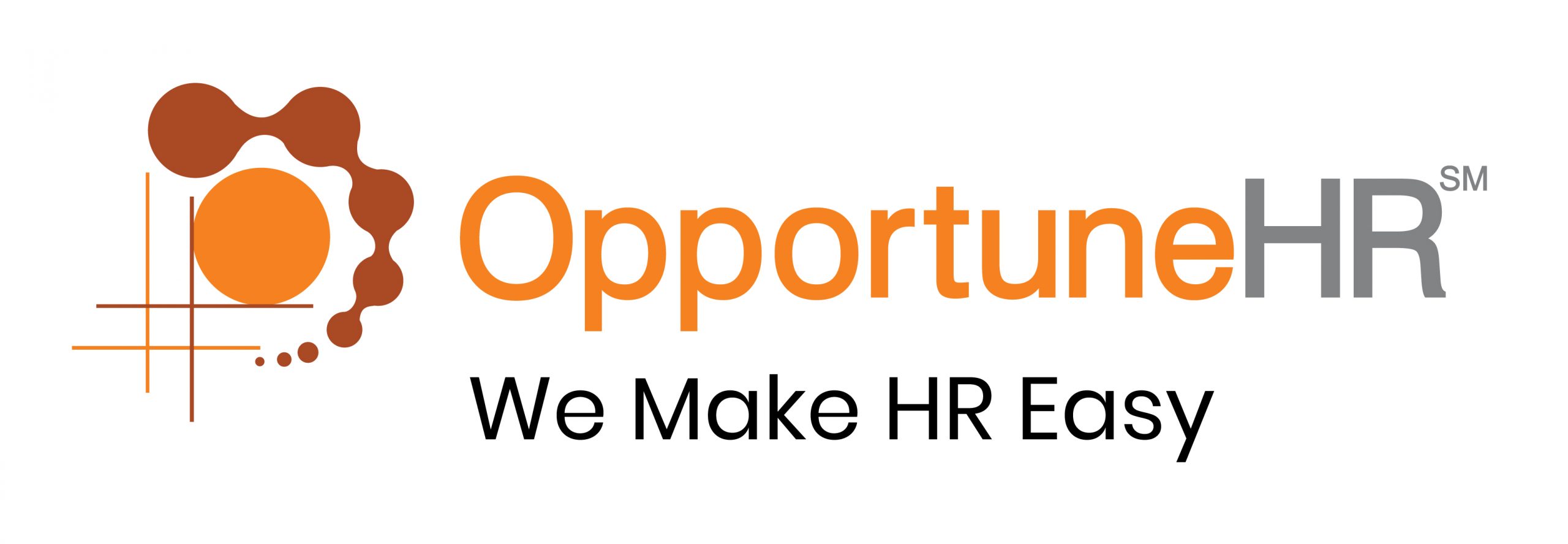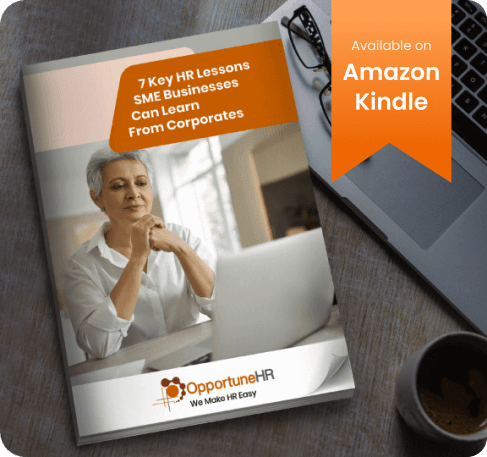November 21, 2024
How To Encourage employees to use Employee Self Service Portal?
ReadDiscover Why OpportuneHR is the best HRMS Software in India! Schedule a Demo OR Call us @ +91 7700-954949



We must appreciate HR for one thing– It is quick to embrace technological progress.
— When HR tech companies brought desktop HR software, HR managers lapped it up. Computer systems replaced manual record-keeping. Spreadsheets replaced paper files; databases stored employee information electronically.
These changes marked the beginning of an era where data could be stored more securely and retrieved faster.
— Then came cloud-based HR software and broke all physical boundaries. In a single leap, the HR function got centralised. HR data could be updated in real time in various factories, offices, warehouses, all at the same time.
Cloud HR software enabled centralised HR. So scaling up of business became easier than ever.
However, these digital solutions are reactive tools that responded to specific requests. And work on data fed to them.
The advent of AI in HR processes is proving to be a turning point. It promises much more. Because–
AI is proactive!
AI in HR software and people management practice can proactively suggest insights and solutions.
— That’s the reason the HR managers are curious to know how to adopt AI in HR?
— They are actively seeking and learning the use of AI in HR.
— And the best HR software companies are on their toes to explore the use cases of AI in HR.
But before we move on to the transformative powers of AI, let’s have a look at what exactly is AI?
AI refers to systems that can simulate human intelligence.
It is the technology that allows computers to learn from data, understand human language, and make decisions like people do.
It uses machine learning, which means computers improve their skills by studying lots of information instead of following fixed rules. So AI can perform activities without being programmed for every task.
AI also uses natural language processing, which helps computers to understand and respond to spoken or written language.
This makes AI useful for things like virtual assistants, chatbots, and smart devices.
If a hammer is an extension of human hands, and makes it multiple times more powerful, consider AI as an extension of the human mind. It helps us achieve much more in less time and with electric speed.
That’s the reason the business world is excited about AI. And like always, HR is grabbing this opportunity to integrate AI in HR functions!

If we look to specific HR processes, AI offers solutions to many persistent challenges faced by HR departments:
But with AI, we can achieve much more —

Traditional recruitment and onboarding procedures involve lengthy manual processes—scanning resumes, conducting multiple interviews, coordinating schedules, and manually onboarding new hires.
These methods get impractical as organisations grow larger. Today, artificial intelligence offers powerful tools to revolutionise these initial stages of employment. AI makes these processes faster, more precise, and engaging for candidates.
AI in HR: Making Sourcing of Talent Quick And Easy!
One of the most significant advancements AI brings to HR is automation in candidate sourcing.
Instead of manually searching through LinkedIn profiles or job boards, AI tools can scrape these sites quickly, scanning thousands of profiles. It identifies those profiles who match the job requirements.
This means recruiters spend less time on hunting and more on engaging the right candidates.
Shortlisting of candidates
Resume screening has traditionally been a time-consuming and mundane task– imagine HR professionals sifting through hundreds or thousands of applications to identify potential matches.
AI-powered applicant tracking systems (ATS) has already changed that. CV parsing is already there. But now machine learning algorithms can analyse résumés rapidly, based on predetermined criteria: such as skills, experience levels, education background, and other keywords relevant to the job description.
The AI systems can even rank candidates according to their fit for the role with remarkable speed and consistency. And also reduce human bias and oversight that sometimes occur with manual review.
Once suitable applicants are identified, chatbots are invaluable for initial engagement with candidates.
These AI-driven virtual assistants can handle routine questions about job openings or company policies at any hour of the day.
Interview Scheduling and Initial Engagement
Once potential candidates are identified, AI takes over scheduling of interviews.
AI can coordinate calendars between interviewers and candidates, sets up meeting times, and sends reminders— all without human intervention.
This eliminates the back-and-forth emails and reduces delays, speeding up the hiring process significantly.
AI also plays a role in candidate engagement.
AI bot can send preliminary tasks or assessments to candidates right after they apply.
These tasks help evaluate skills early on, giving recruiters a clearer picture of each applicant’s capabilities.
Based on how candidates perform on these tasks, AI can filter out those who may not be the best fit, narrowing down the pool to top contenders.
The benefits of using AI in HR recruitment process are clear:
Companies save time, reduce administrative work, and make hiring decisions based on data rather than just resumes.
This approach improves the quality of hires and creates a smoother experience for both recruiters and candidates.
AI measures candidate skills in a clear, unbiased way using smart testing methods.
These AI-driven tests often involve real-world tasks or problem-solving exercises done online. They check technical and communication skills instantly and give clear numbers to show how well someone did.
Some tools use natural language processing (NLP) to listen to answers during recorded interviews. They can spot things like how clearly a person speaks or how confident they sound. This gives extra clues about whether the candidate fits the job.

Many SME organisations don’t even have an onboarding process. On the other hand, larger organisations follow a routing onboarding process for all new joiners.
But AI is transforming the onboarding scene with personalised onboarding modules!
AI customises the content based on an employee’s background or specific role requirements. And then, it delivers relevant training materials just-in-time rather than overwhelming newcomers with information all at once.
AI virtual assistants guide new employees through administrative formalities like benefits enrolment or workspace setup via conversational interfaces. It’s easy and effective, as the new employee need not to wait for the HR assistant. The bot responds instantly to their questions.
These recruitment and onboarding innovations are resulting in tangible benefits across various industries:
Time Savings: Companies who implemented AI in HR for the recruitment process report dramatic reductions in their recruiting cycles– from several weeks down to days!
Quality of Hires: Feedback from clients suggests that AI assessment tools are effective. These sophisticated tools measure candidate skills and cultural fit objectively. And cut down on the misfits early in the recruitment stages. This results in better-matched applicants getting to the final rounds. And leads to higher performance.
Enhanced Candidate Experience: Even for well-intentioned HR managers, it is not possible to respond to candidate queries in real time. But automated (yet personalised) communication keeps them informed throughout their recruitment journey— resulting in positive perceptions regardless of whether they land the position.

Organisations recognize that employee engagement and retention are key to business success. Engaged employees work harder, deliver better customer service, and drive innovation. When employees feel connected and valued, they bring energy and commitment to their roles.
On the flip side, high turnover disrupts daily operations and raises costs. Recruiting and training replacements drain resources. Plus, frequent departures hurt team morale and slow down progress.
This is where AI steps in. It helps companies understand how employees really feel by analysing feedback quickly and accurately.
Sentiment Analysis for Real-Time Insights
One of the foundational ways AI enhances employee engagement is through sentiment analysis. Which means AI can analyse textual feedback from surveys or open-ended comments, and can gauge emotional tone.
So it can give management a sense: How motivated is the workforce? And can indicate simmering issues which might become big in future.
One important advantage of AI in employee sentiment surveys is its ability to deliver real-time feedback.
Traditional survey methods often involve several steps that slow down the process: distributing the survey, waiting for employees to respond, collecting responses, and then manually analysing the data.
This entire cycle can take days or even weeks, delaying the organisation’s understanding of how employees truly feel.
With AI-powered tools, this process changes dramatically. AI scans and analyses employee responses as soon as they come in— no waiting. It quickly identifies trends, highlights areas of concern, and detects shifts in overall morale.
This instant analysis allows HR teams and managers to see what’s happening right now, rather than relying on outdated information.
The benefits are clear:
Organisations can respond promptly to negative feedback, address potential issues before they grow, and reinforce positive sentiments to boost engagement.
Real-time feedback turns employee sentiment surveys from a slow, reactive process into a fast, proactive tool that supports better decision-making. And a stronger workplace culture.

Understanding current employee sentiment is valuable, but predicting future behaviour gives organisations a strategic advantage.
Predictive analytics uses historical data— like performance reviews, attendance records, and engagement survey results— along with factors such as tenure and workload, to forecast which employees might leave.
For instance, an employee shows less activity on HR portals, combined with declining performance and negative comments picked up by sentiment analysis. The predictive model flags them as high risk for turnover. These combined signals point to growing dissatisfaction. This is just an example. The AI systems use multiple signals and patterns to arrive at suggestions and recommendations.
Armed with this insight, HR teams can step in early. They might offer coaching, personalised recognition, or other support tailored to the employee’s needs. Acting proactively helps fix problems before employees decide to leave, reducing turnover and keeping valuable talent in the organization.

Employees want growth opportunities that match their strengths and career goals. Traditional training often offers the same programmes to everyone, which may not fit individual needs.
And that’s why many employees never get the training for their unique needs.
AI changes this by analysing each employee’s performance data and career interests gathered from surveys or interviews. Machine learning algorithms use this information, plus data on successful career paths inside the company and industry standards, and then create personalised development plans.
 For example
For exampleIf an engineer shows interest in project management, AI might suggest leadership training courses and connect them with mentors who have relevant experience. This tailored support matches their skills and goals.
This approach motivates employees because they see clear steps towards their ambitions. At the same time, companies benefit by growing talent internally and preparing employees for future roles more effectively.

HR teams often handle many routine questions about benefits or workplace concerns, which can lead to delays and inconsistent answers. AI-powered chatbots change this by acting as instant support agents, available 24/7.
Employees can ask questions like “How do I apply for parental leave?” or “Can I work flexible hours?” The chatbot responds immediately with accurate information about company policies— no waiting in line for HR help.
Beyond simple queries, chatbots also guide employees through more complex processes, like benefits enrolment or reporting issues, while respecting privacy rules.
This instant, reliable support improves employee experience and frees up HR staff to focus on higher-level tasks.

When organisations use AI-driven engagement tools thoughtfully— focusing on transparency and fairness— they create a positive shift in workplace culture.
Data insights help leaders spot areas of dissatisfaction early. This lets them act quickly with targeted solutions, showing employees that management listens and cares before problems grow.
Personalisation plays a big role too. By recognising each employee’s unique motivations and needs, AI boosts feelings of being valued. When employees see their feedback lead to real change through AI-powered strategies, their loyalty towards the company’s mission grows stronger.
AI in HR transforms how companies engage with employees:
Real-time sentiment analysis reveals how teams feel right now.
Predictive models warn about future risks like turnover.
Personalised development plans open clear growth paths.
Together, these tools help build motivated, committed teams. Organisations that adopt AI responsibly—balancing ethics with human-centred design—gain an edge. They retain key talent better and create cultures ready to thrive in a fast-changing digital world.

Today, HR decisions rely less on gut feelings and more on data. Organisations gather large amounts of information from various HR processes and employee interactions. Using this data helps them plan better, manage talent strategically, and promote diverse, inclusive workplaces.
This shift transforms HR into a precise science powered by AI. Key tools include:
Big data analytics: Identifies patterns and trends across massive datasets.
Predictive modelling: Forecasts future outcomes like turnover risks or skill gaps.
Real-time dashboards: Provide up-to-date insights to leaders for quick action.
The starting point is collecting relevant, high-quality data. In the past, HR used spreadsheets or paper records— methods prone to mistakes and inefficiencies. Now, digital platforms gather both structured data (like demographics, performance reviews) and unstructured data (such as survey comments or emails).
This rich data foundation enables AI to uncover insights that guide smarter HR strategies, improving talent management and creating workplaces that adapt to evolving needs.
From speeding up recruitment and onboarding to enhancing employee engagement and data-driven decision-making, its impact is real and measurable. The use cases of AI in HR processes are real.
For startups and SMEs, AI isn’t just a luxury— it’s a tool that levels the playing field by tackling talent sourcing, automating routine tasks, and offering personalised support.
Embracing AI helps HR teams work smarter, not harder, freeing them to focus on strategic priorities. Faster hiring, better candidate matches, happier employees, and a stronger workplace culture make AI adoption a smart move.
| HR Process | How AI is Transforming It | Benefits | Examples |
|---|---|---|---|
Recruitment | AI-powered tools screen resumes, rank candidates, and chatbots handle initial queries | Faster hiring, better candidate matching, reduced bias | Resume parsing, AI chatbots for FAQs, predictive analytics for candidate fit |
Onboarding | Automated workflows guide new hires through paperwork and training | Smoother onboarding, consistency, saves HR time | Digital forms, AI-driven training modules, personalized onboarding plans |
Employee Engagement | Sentiment analysis from surveys and communication tools to gauge morale | Real-time feedback, proactive issue resolution | AI tools analyzing employee emails, pulse surveys with sentiment scoring |
Performance Management | AI analyzes performance data, provides unbiased reviews and personalized feedback | Objective appraisals, continuous improvement | Automated performance reports, AI coaching suggestions |
Learning & Development | Personalized learning paths based on employee skills and goals | Better skill development, targeted training | AI recommending courses, adaptive learning platforms |
Payroll & Benefits | Automates payroll calculations and benefits administration | Reduced errors, faster processing | AI-driven payroll software, automated benefits enrollment |
Workforce Planning | Predictive analytics to forecast hiring needs and talent gaps | Strategic hiring, cost savings | AI models forecasting turnover and skill shortages |
Compliance | Monitors legal changes and audit trails to ensure compliance | Reduced risk, easier audits | AI compliance monitoring tools |
Employee Retention | Identifies flight risks through behavior patterns and feedback analysis | Proactive retention strategies | Predictive attrition models, engagement analysis |




